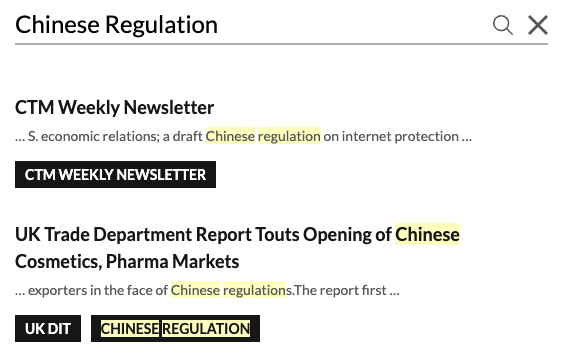On August 28, the Ministry of Commerce (“MOFCOM”) and the Ministry of Science and Technology jointly issued Announcement [2020] No.38, Announcement of Adjusting the Catalog of Technologies the Export of Which Is Prohibited or Restricted (关于调整发布《中国禁止出口限制出口技术目录》的公告).
According to the Announcement, the adjustments to the Catalog of Technologies Prohibited and Restricted from Export by China include the addition of 23 new items to the export control catalog, two of which have caught the public’s attention: (1) personalized information push service technology based on data analysis; and (2) artificial intelligence interactive interface technology. These items are likely related to a potential deal between ByteDance and U.S. companies to sell popular social media app TikTok. Other newly added technologies include artificial breeding technology of wild agricultural plants, space material production technology, and laser technology
The Announcement also revises the control points and technical parameters of 21 technologies, involving fields such as crop breeding technology, chemical raw material production technology, biological pesticide production technology, spacecraft measurement and control technology, space data transmission technology, information processing technology and vacuum technology.
In addition, the Announcement removes four technologies that were previously prohibited from exporting, including microbial fertilizer technology and caffeine production technology. It deletes five technologies that were restricted from exporting, including Newcastle disease vaccine technology, natural medicine production technology, functional polymer material preparation and processing technology, chemical synthesizing and semi-synthesizing drug production technology, and information security firewall software technology.
China’s export control regime is fairly young. Its first law related to export controls is the Foreign Trade Law (effective in 1994 and revised in 2004). This law authorizes the government to restrict exports under certain circumstances. The implementing regulations include
- Regulations on the Administration of the Export of Dual-Use (Military and Civil) Nuclear Facilities and Related Technologies (issued in 1998)
- Regulations on the Administration of the Import and Export of Technology (issued in 2001)
- Regulations on the Administration of Import and Export of Goods (issued in 2001)
To implement these laws and regulations, in 2001 MOFCOM issued the first Catalog of Technologies the Export of Which Is Prohibited or Restricted. The items listed in the Catalog would be subject to export controls. The Catalog was revised once in 2008, and is now going through a second revision, starting in 2018.
Over the same period, Beijing has also been crafting a comprehensive Export Control Law, in an effort to consolidate all the laws and regulations and create an overarching framework addressing export controls. MOFCOM issued the first draft of the law in June of 2017, and since then the draft has been under review and has gone through some revisions. The comparisons are available here and here. The current version is not as extensive as the corresponding U.S. export controls. For instance, the current version of the law does not have extra-territorial jurisdiction as U.S. export control laws do. However, it has many provisions that are similar to what is in the U.S. law. For instance, it states that destination countries may be subject to different levels of export controls based on the risk level associated with these countries (Article 8). It also requires the establishment of a Control List (Article 4). Foreign entities that fail to comply with the law will be placed on the list and restricted from dealing with Chinese businesses (Article 18).

